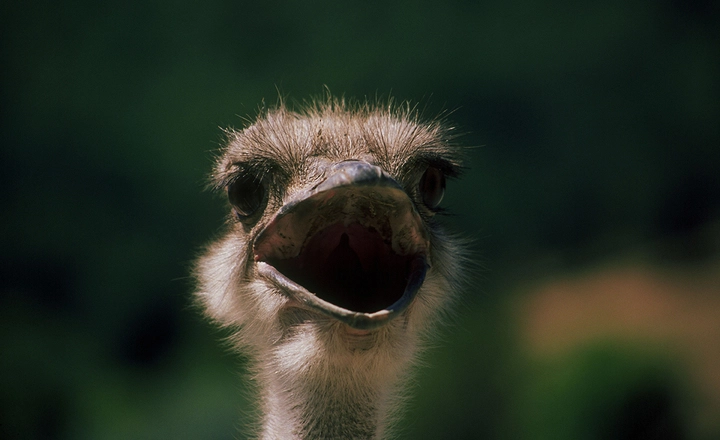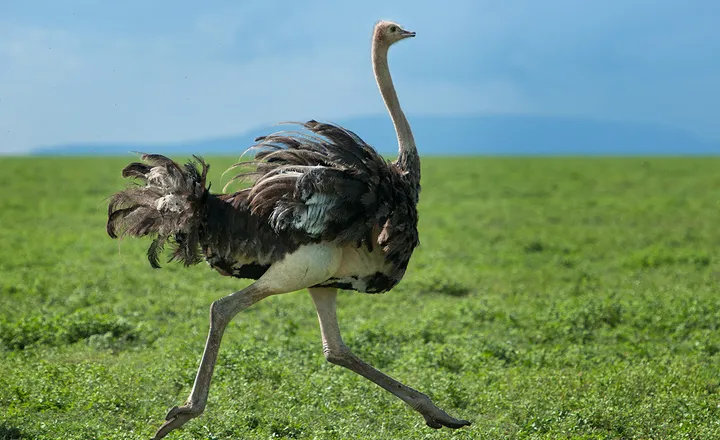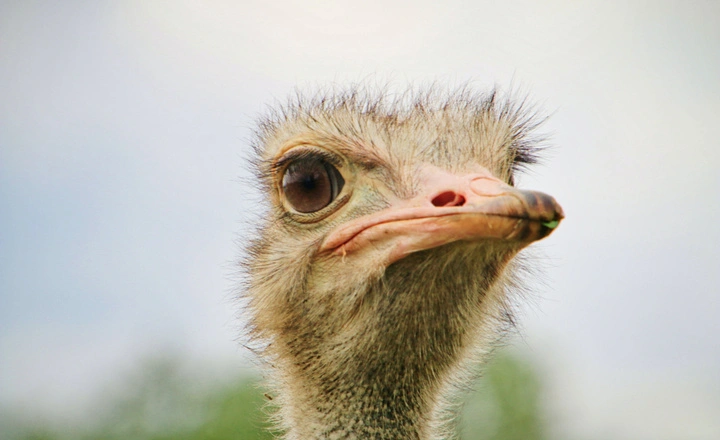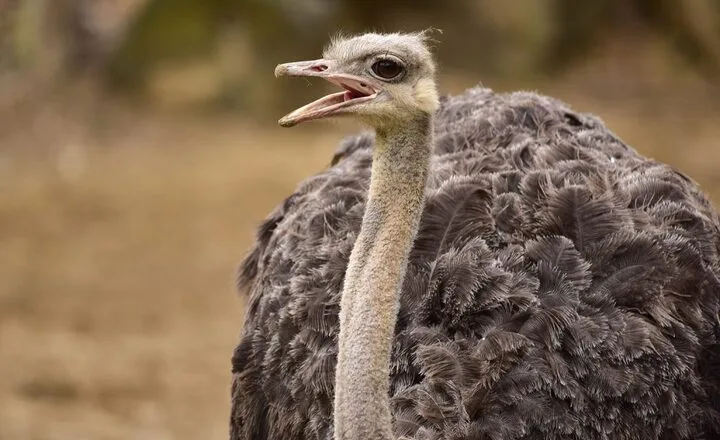Have you ever gazed in wonder at the majestic and enigmatic ostrich, with its long neck, powerful legs, and soul-piercing gaze? These flightless birds, native to the vast savannas of Africa, are often shrouded in mystery. But the most curious thing is, do ostriches have teeth?
It may come as a surprise that these seemingly prehistoric creatures are not only the largest birds on Earth but also possess some intriguing dental secrets.
Do Ostriches Have Teeth?
Ostriches do not have teeth like most birds. They have blunt ridges and a strong beak that allows them to grab and swallow their food whole.
The food then goes to the second stomach where it is chewed and digested. They primarily eat small plants, seeds, roots, leaves, insects, and small organisms like reptiles, spiders, ants, and flies.
Despite the lack of teeth they can easily tear and pick up food using their specially designed mouths. Their unique digestive system compensates for the absence of teeth, allowing them to digest their varied diet efficiently.
They have evolved with physical features that enable them to thrive without the need for traditional teeth for chewing and biting.
What Do Ostrichs Have Instead of Teeth?
They have wide beaks instead of teeth that serve multiple functions. The beak of an ostrich is sturdy, long, and wide and has a greyish-pink colouration. It is primarily made up of calcium and another hard substance called Keratin.
This beak helps ostriches in various activities such as finding food, tearing roots of small plants, plucking leaves from trees, and defending against predators.

Contrary to popular belief, the beak of an ostrich is not insensitive to pain. It contains a large number of blood vessels and sensitive cells and tissues.
This means that an ostrich can experience significant pain in case of injury. It is important to understand that while the beak is a versatile tool for ostriches, it is also a vulnerable part of their anatomy that requires care and protection.
How Do Ostrich Chew Food Without Teeth?
Ostriches have a unique digestive system that allows them to chew food without teeth. Most of the chewing process occurs in their stomachs, where they have multiple compartments for digestion.
They use their beaks to cut food into smaller pieces before swallowing it, as they lack teeth for grinding. The gizzard is the key component in their digestive system, where food is ground down to a fine consistency with the help of small stones and pebbles that the ostrich ingests.
These hard objects act as grinding agents, breaking down the food particles into digestible pieces. This specialized adaptation enables ostriches to effectively process and extract nutrients from their food despite not having traditional teeth for chewing.
Is an Ostrich Bite Dangerous? Will it Hurt?
An ostrich bite can indeed be dangerous and it will hurt. Despite their lack of teeth, ostriches have powerful beaks that can cause significant damage if they bite you.
Their strong beaks are capable of breaking the skin and causing bleeding, leading to considerable pain. While the risk of infection is lower compared to other animal bites, immediate treatment is still necessary to prevent complications.

It’s important to note that the real danger from an ostrich comes from its powerful kick rather than its bite.
They are known for their ability to deliver incredibly forceful kicks that can cause severe trauma, especially to the face or abdomen. Maintaining a safe distance from these birds and avoiding any interactions that could potentially lead to harm is crucial.
What Are Ostrich Beaks Made Of?
Ostrich beaks are primarily composed of calcium and keratin. The flat surface and rounded beak tip are made of calcium, while the bony part comprises keratin.
With the presence of these hard substances, their beaks also contain numerous blood vessels, tissues, and sensitive cells.

This means that ostriches can feel pain in their beak if injured, contrary to popular belief that they may not have sensation due to the presence of keratin, similar to human nails.
The sensitivity of ostrich beaks makes them prone to injury, and an ostrich can experience pain or even break its beak if subjected to trauma.
It’s crucial to recognize that these unique structures play an important role in their survival and daily activities, highlighting the complexity and functionality of this fascinating bird anatomy.
Do Ostriches eat Humans?
They do not eat humans. They are herbivores and primarily feed on plants, seeds, and insects. If provoked or threatened, ostriches can become aggressive and may attack humans. Ostrich attacks can be dangerous and potentially fatal due to their powerful legs and sharp claws.
Maintaining a safe distance from ostriches in the wild or at a zoo is important. Never attempt to provoke or approach them without proper guidance.

Respecting their space and observing them from a distance will ensure your safety and the well-being of the ostriches. Avoiding any situation that could lead to an aggressive encounter with these large birds is best.
Ostrich facts
The ostrich is indeed an impressive bird with fascinating characteristics. Not only is it one of the fastest land birds, capable of reaching speeds up to 70 kilometers per hour, but it also has unique physical attributes that set it apart from other birds.
With its large eyes, measuring about 5cm in size, the ostrich is able to keenly observe its surroundings and spot potential predators from a distance. Additionally, its flat sternum and lack of a strong keel on the wing contribute to its classification as a flightless bird within the ratite group.
They are able to lay the largest eggs among all bird species. These eggs can measure up to 15 cm in length and weigh around 1.4 kilograms, making them significantly larger than those laid by domestic chickens.
Conclusion
While ostriches do not have teeth in their mouths, they possess a unique digestive system that allows them to break down and digest tough plant material efficiently. The presence of a gizzard with swallowed stones aids in grinding food, compensating for the absence of teeth.
This adaptation reflects the evolutionary process that has shaped ostrich anatomy over millions of years.
Understanding the specialized adaptations of ostriches provides valuable insight into the diversity of life on Earth. It highlights the incredible ways in which animals have evolved to thrive in their environments.
FAQs
What to do if an ostrich attacks you?
If an ostrich were to attack you, it is important to remain calm and avoid making sudden movements. Ostriches are known for their powerful legs and sharp claws, so it is crucial to protect your vital organs by covering your head and neck with your arms.
How long can an ostrich live?
The average lifespan of an ostrich is around 30 to 40 years in the wild. Ostriches in captivity have been known to live longer, with some reaching up to 50 years or more.
Do ostriches have 3 stomachs?
They do not have three stomachs. They actually have only one stomach, which is divided into four compartments – the proventriculus, gizzard, small intestine, and large intestine.
